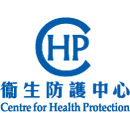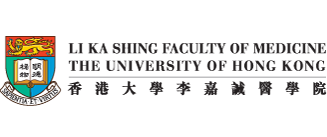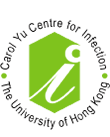Chapters
Part III: Guidelines for selected antimicrobial use
3.10 Antifungal agents
- The mechanism of action for the major antifungal classes is summarised in Table 3.2.
- It is important to note that there are significant within and between class variations in the antifungal spectrum of the agents (Table 3.3). They also differ in their pharmacokinetic properties and dosage adjustment in renal and hepatic dysfunction (Table 3.4).
- Echinocandins are not active or show very limited activity against Cryptococcus neoformans, Trichosporon beigelii, dematiaceous moulds, Zygomycetes, Fusarium spp. and dimorphic fungi (Blastomyces, Histoplasma, Coccidioides) because these fungi do not have the target for the echinocandins to act.
- Fluconazole shows activity against Candida albicans. It is also active against non-albicans Candida but MICs are higher, especially for C. glabrata.
- Analysis of fungaemia data in local hospitals showed that about 10% of the isolates were potentially resistant to fluconazole and the echinocandins (Figure 3.1).
- Table 3.5 showed a suggested scheme for choosing antifungals.
- Table 3.6 summarised the antifungal agents that have been evaluated in randomised controlled trials for their five major indications. In general, the different agents were non-inferior to each other for the major outcomes. In several studies, superior results were demonstrated for certain outcomes.
Table 3.2 Mechanisms of antifungal action
| Primary mode of action | Target | |
|---|---|---|
| Azoles (fluconazole, itraconazole, voriconazole) |
Inhibit ergosterol biosynthesis | Fungal cytochrome P-450 dependent 14 α-sterol demethylase |
| Echinocandins (caspofungin, anidulafungin, micafungin) |
Inhibit fungal cell wall glucan synthesis | Fungal β-1, 3-glucan synthase |
| Amphotericin B | Bind to and make fungal cell membrane ‘leaky’ | Fungal cell membrane |
Table 3.3 General patterns of antifungal susceptibility
| FLU | ITR | 5FC | AMB | VOR | POS | CAS | MFG | AFG | |
|---|---|---|---|---|---|---|---|---|---|
| Yeasts | |||||||||
| C. albicans | S | S | S | S | S | S | S | S | S |
| C. tropicalis | S | S | S | S | S | S | S | S | S |
| C. glabrata | S-DD to R | S-DD to R | S | S-I | S | S | S | S1 | S |
| C. krusei | R | S-DD to R | I-R | S-I | S | S | S | S | S |
| C. lusitaniae | S | S | S | S-R | S | S | S | S | S |
| C. parapsilosis | S | S | S | S | S | S | I | S1 | S |
| C. guillermondii | S | S | S | S | S | S | I | S | S |
| Cryptococcus neoformans | S | S | S | S | S | S | R | R | R |
| Trichosporon | R | I | R | I | S | S | R | R | R |
| Moulds | |||||||||
| Fusarium | R | R | R | ++ | ++ | ++ | R | R | R |
| Aspergillus | R | + | + | + | ++ | +++ | ++ | ++ | ++ |
| Pseudallescheria | R | S | R | R | ++ | ++ | R | R | R |
| Zygomycetes | R | + | R | + | R | + | R | R | R |
| Dimorphic fungus | |||||||||
| H. capsulatum | + | ++ | R | ++ | ++ | ++ | R | R | R |
| P. marneffei | + | ++ | + | ++ | ++ | ++ | R | R | R |
S, susceptible; S-DD, susceptibility is dose-dependent; I, intermediate; R, resistant
Amphotericin B (AMB); 5-flucytosine (5FC); fluconazole (FLU); itraconazole (ITR); posaconazole (POS); voriconazole (VOR); caspofungin (CAS); anidulafungin (AFG); micafungin (MFG)
Note:
1 Sporadic cases of breakthrough C. glabrata and C. parapsilosis infection have been reported in the literature Reference: (169–179).
Table 3.4 Comparison of selected pharmacokinetic parameters for the azoles and caspofungin
| Generic name (Trade name) |
Fluconazole (Diflucan) |
Itraconazole (Sporanox) |
Voriconazole (Vfend) |
Posaconazole (Noxafil) |
Caspofungin (Cancidas) |
Anidulafungin (Eraxis) |
Micafungin (Mycamine) |
|---|---|---|---|---|---|---|---|
| Oral bioavailability | >80% | Capsule: 30–55% Solution: 60–80% |
90% | > 90% | Only I.V. | Only I.V. | Only I.V. |
| Cmax | 10.2 | 0.2–0.4 μg/mL after 2–4 h of 200 mg P.O. | 2 μg/mL after 200 mg P.O. | 0.28 μg/mL after 5h | 10 μg/mL end infusion | 3.55 to 10.9 μg/mL | 10 μg/mL end infusion |
| Time to Cmax (hour) | 2–4 | 4–5 | 1–2 | 3-5 | - | - | - |
| Cerebrospinal fluid (CSF) penetration |
50–94% | <1% | 20–50% | <1% | Unknown (very low) | Unknown | Undetectable |
| Plasma half-life (hour) | 22–35 | 24–42 | 6–24 | 35 | 9–11 (terminal half-life 40–50) | 26 | 11-21 |
| Tissue distribution | Widely distributed in most tissues including CSF. | Levels in body fluids/CSF low; concentrations in lung, liver & bone 2–3 times > serum. High concentration in stratum corneum due to drug secretion in sebum. | Widely distributed into body tissues & fluid including brain & CSF. | Widely distributed into body tissues except CSF. | Widely distributed; highest concentration in liver. | Widely distributed | Widely distributed |
| Principal route of elimination | Renal | Hepatic | Hepatic | Hepatic | Hepatic | - | Hepatic |
| Active drug in urine (%) | 80% | <1% | 2% | 14% | 1% | <1% | <15% |
| Dosage | P.O. or I.V. 50–400 mg/day depending on indications | P.O. 200–400 mg/day | Adult, P.O., 200–400 mg q12h for 24 h, then 100–200 mg q12h; I.V. 6 mg/kg q12h for 24 h, then 4 mg/kg q12h | Aspergillosis/Candida: Adult, P.O. 200 mg q8h Mucormycosis/ Cryptococcus: Adult, P.O. 400 mg q12h |
I.V. infusion of 70 mg loading, then 50 mg daily | I.V. infusion of 200 mg on day 1, then 100 mg daily | I.V. 100–150 mg daily |
| Renal insufficiency | Reduce dose; removed by haemodialysis. | Usual dose. At glomerular filtration rate <10 mL/min, some recommend decrease dose 50%. | No dose adjustment need with P.O. voriconazole. Avoid I.V. voriconazole in renal failure. | No dose adjustment necessary | No dose adjustment needed. Not removed by haemodialysis. | No dose adjustment | No dose adjustment. Poorly dialysed. |
| Hepatic insufficiency | - | Avoid | Mild to moderate (Child A/B) same loading, reduce maintenance 50%. Avoid in severe impairment. | - | Reduce dose to 35 mg daily (after the 70 mg loading dose) in moderate (Child’s score 7–9). No data on usage in patient with severe hepatic failure. | No dose adjustment | No dose adjustment |
Table 3.5 A suggested scheme for systemic antifungal agents
| First-line | Alternative | |
|---|---|---|
| Invasive candidiasis/candidaemia (180) | ||
| Neutropenic or critically ill |
Echinocandin |
|
| Stable and nonneutropenic | Echinocandin |
|
| Invasive aspergillosis (181) | ||
| Voriconazole |
|
|
Table 3.6 Selected clinical trials conducted on licensed antifungals
| Antifungal prophylaxis | Neutropenic fever | Invasive aspergillosis | Candidaemia or invasive candidiasis | Oesophageal candidiasis |
|---|---|---|---|---|
| Voriconazole vs. placebo (182) | Micafungin vs caspofungin (183) | Posaconazole vs liposomal amphotericin B ± caspofungin (184) | Caspofungin vs amphotericin B (172); Caspofungin vs amphotericin B in newborn infants (185) |
Caspofungin vs amphotericin B (186–187) |
| Micafungin vs fluconazole (188); Micafungin vs fluconazole (189); Micafungin vs fluconazole, liposomal amphotericin B or caspofungin post-liver-transplant (190) |
Caspofungin vs liposomal amphotericin B (191); Caspofungin vs liposomal amphotericin B (192) | Voriconazole vs amphotericin B (173,193) | Caspofungin (standard vs high dose) (194) | Caspofungin vs fluconazole (195) |
| Itraconazole vs fluconazole (196–197) | Voriconazole vs liposomal amphotericin B (198) | Liposomal amphotericin B (standard dose vs high loading dose)(199) | Anidulafungin vs fluconazole (200); Anidulafungin vs fluconazole in critically ill (201) |
Anidulafungin vs fluconazole (202) |
| Posaconazole vs fluconazole or itraconazole (203–205) | Itraconazole vs amphotericin B (206–207) | Isavuconazole vs voriconazole (for invasive mould disease) (208) | Micafungin vs caspofungin (177) | Micafungin vs fluconazole (209–210) |
| Voriconazole/ posaconazole
vs fluconazole/ itraconazole in AML/MDS undergoing chemotherapy (211); Voriconazole vs itraconazole in post allogeneic HSCT (212); Voriconazole vs fluconazole in post allogeneic HSCT (213) |
Different amphotericin B formulations (214–215) | Voriconazole and anidulafungin vs voriconazole monotherapy (216) | Micafungin vs liposomal amphotericin B (217–219) | Voriconazole vs fluconazole (220) |
| Aerosolized liposomal amphotericin B vs placebo inhalation (221) | Micafungin vs itraconazole (222) | Voriconazole vs amphotericin B followed by fluconazole (223) | Isavuconazole vs fluconazole (224) | |
| Voriconazole vs low dose amphotericin B in paediatric acute leukaemia induction (225) | Immediate voriconazole vs deferred placebo (226) | Micafungin vs voriconazole in kidney transplant recipients (227) | ||
| Anidulafungin vs fluconazole in high-risk liver transplant patients (228) | Preemptive micafungin following gastrointestinal surgery (229) | |||
| Caspofungin prophylaxis followed by preemptive therapy for invasive candidiasis (230) | Caspofungin vs micafungin (231) |
Note:
AML, acute myelogenous leukaemia
HSCT, haematopoietic stem cell transplantation
MDS, myelodysplastic syndromes
Agent with superior results for some outcomes is underlined.
Figure 3.1 Distribution by species for 595 episodes of fungaemia in HA, 2015-20161

Note:
- 1Each species from each patient is only counted once.
- 2Including one each of Candida doobushaemulonii, Candida guilliermondii, Candida haemulonii, Candida novegensis, Cryptococcus spp., Fusarium solani and Malassezia furfur.















